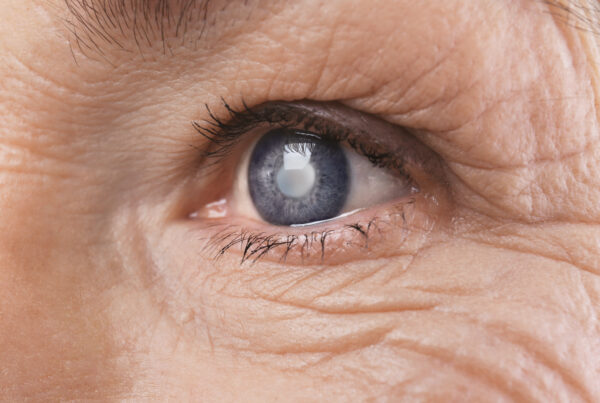
February is macular degeneration awareness month. Age-related macular degeneration (AMD) is one of the leading causes of decreased vision in the United States. As its name suggests, this disease is more common with increasing age, and it affects an area in the back part of the eye called the macula. The macula is the central portion of the retina, which is a thin layer in the back of the eye that is necessary for sight. The macula controls your central vision. It is what allows us to read, see people’s faces, and distinguish colors. In its severe stages, macular degeneration can cause a loss of this central vision.
Risk factors for macular degeneration include: increasing age, family history of AMD, cigarette smoking, Caucasian ethnicity, high blood pressure, high cholesterol; and possibly female gender and light blue eyes. While there is no “cure” for macular degeneration there are treatments that may benefit certain patients. There are two main types of macular degeneration, dry and wet. About 90% of people with AMD have the dry type. The dry type is generally slowly progressive, and can sometimes be treated with certain eye vitamins to slow this progression. The wet type can get worse very quickly and may need additional treatments such as laser procedures or injections of medicine. Patients with severe macular degeneration can have a significant loss of central vision in both eyes and may benefit from seeing a Low-Vision specialist to find tools to help them with their daily visual needs. If you have a family history of macular degeneration or some of the other risk factors listed above call today to schedule an appointment with one of our doctors for an evaluation.



